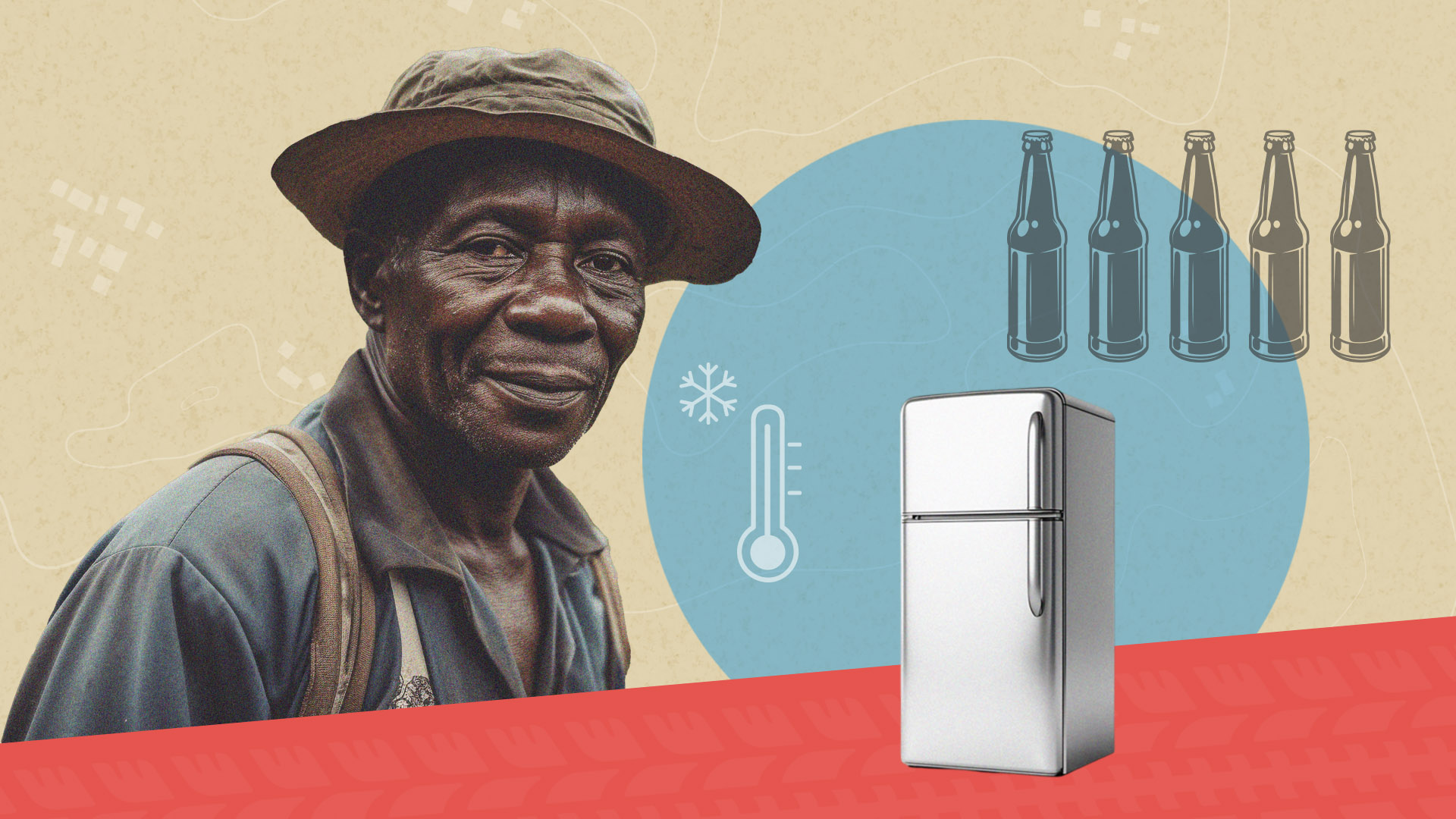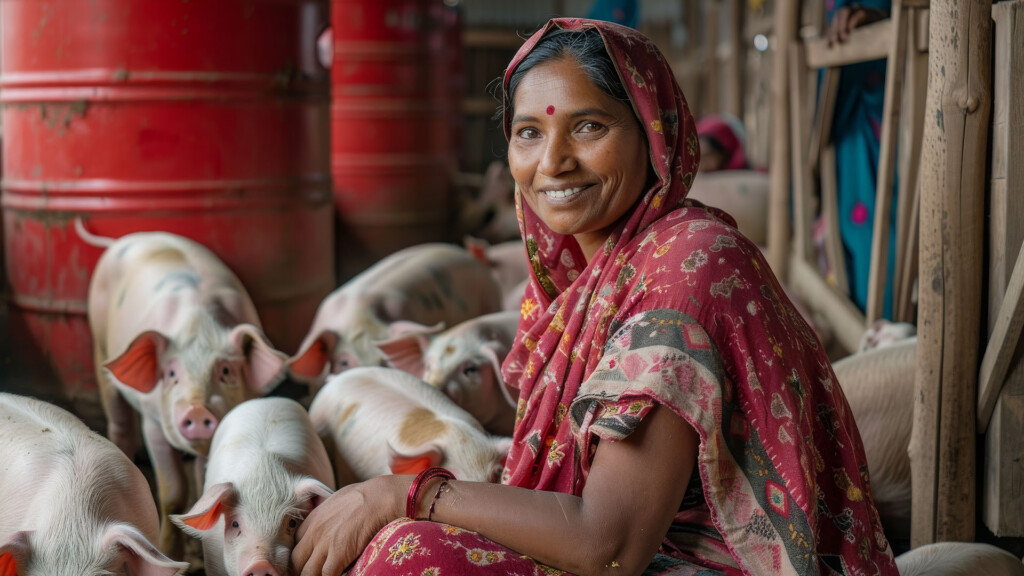PUE Refrigerators: Consumer finance

Summary
Productive use of energy (PUE) refrigerators can be prohibitively expensive for last mile customers unless they have access to finance. Here we give an overview of two types of consumer finance: PAYGo and cooling-as-a-service, plus steps last mile distribution (LMD) companies can take to maximise repayment rates.
Tackle the affordability challenge
PURE appliances such as refrigerators have the potential to increase the productivity and earnings of people significantly.
Affordability of refrigeration solutions, however, is a major barrier and providing consumer finance is far from straightforward due to the complexity of credit risk management and high working capital requirements for LMDs.
A household or small business with an average monthly income of USD $100, for example, does not have the ability to save up for a refrigerator costing up to USD $1,000.
And even if LMDs provide PAYGo or other financing solutions, credit sales for expensive technologies like refrigerators can have a huge impact on the financial wellbeing of customers.
A recent Efficiency for Access and 60 Decibels study in East Africa found that 50% of respondents said they had to make unacceptable sacrifices or even cut back on their daily necessities to pay for their fridges.
In conclusion, LMDs should thoroughly research their customers’ financial capability. If LMDs cannot provide their own credit, they can consider collaborating with microfinance institutions or savings and credit co-operatives, and target small business owners that could benefit from refrigeration solutions.

Explore different consumer finance models
PAYGo
LMDs that already have experience with PAYGo sales of solar home systems might be inclined to use PAYGo-enabled refrigerators.
However, even more so for refrigerators, LMDs should evaluate whether they can afford the credit risks, given the longer time that consumers generally require to pay off their product.
Some LMDs require cash sales next to PAYGo sales and focus on institutional clients such as hospitals and schools.
LMDs are recommended to pilot PAYGo sales and monitor repayment rates. If lower than expected, it may be necessary to adjust financing terms, such as extending the payment period or modifying the payment frequency, to better align with customers’ financial situations.
Retailers that purchase a fridge on PAYGo, for example, would appreciate a (monthly) plan that mirrors the business’s cash flow cycles.
When PAYGo fridges are deactivated due to late payments, customers might experience this as an even bigger pain point than with solar lights. This is because it will destroy perishable goods stored in the fridge, which leads to a loss of income. Also, it will take customers quite some time for the fridges to get back to the cooling temperature once activated again. LMDs are therefore recommended to consider alternative incentives and grace periods.
Cooling-as-a-service (CaaS)
This is a relatively nascent business model that is especially relevant for end-users that do not use their productive appliances regularly or at full capacity.
Sosai in Nigeria has piloted a service agreement for solar dryers that are used only seasonally. With CaaS, customers pay for cooling or freezing services instead of purchasing and owning the refrigerator themselves.
Since 2020, Koolboks has offered CaaS to its customers in Nigeria, including small businesses and health centres.
With fees as low as USD $10 per month, paid through PAYGo software, customers can access reliable cooling services without worrying about upfront payments, technology risks, or issues such as installation, operation and maintenance.
Koolkboks work with local distributors that operate the fridges. Depending on the size of the system, CaaS providers can typically recover investment costs after approximately three years of usage. This can be shortened by increasing the utilisation rate of their equipment and reducing costs by using energy-efficient equipment and providing preventive maintenance.
However, working capital needs associated with inventory are still higher under the CaaS model as compared to the lease-to-own model because reimbursement from customers takes longer.

Maximise repayment rates
If the productive use promise of refrigeration is not fulfilled, this could lead to high default rates. It can also have detrimental effects on the faith that communities put in this new product category.
When selling solar irrigation pumps farmers should be oriented on how this technology unlocks opportunities for them to grow new crops and access new markets that are more lucrative. Similarly, small business owners buying refrigerators should be told about new income opportunities they can generate from their fridges.
POPO in Uganda is exploring whether they can help women retailers access beverage supplies that can be chilled in fridges.
They also found that these women need their support to explain to their spouses that they are not bringing debt to the family. POPO sometimes needs to help customers to understand and even calculate the return on their investment.
Unless subsidised by women entrepreneurship programmes that target the same customers for example, any form of extended customer support requires new investment from a distributor and this should be recouped through reduced credit risks.
Keep reading
Read more about selling PUE refrigerators:
- Consumer demand and value proposition
- Sales and marketing
- Product and supplier selection
- Stock financing
- Logistics
- After-sales support
Read our full publication
Want to learn more? The above articles have been taken from our downloadable publication: How to Sell Refrigerators for Productive Use.
Photo credits
Top graphic: Contains the following edited images: photo of a man by vecstock on Freepik; fridge photo by muhammad.abdullah on Freepik; and soda icon by dgim-studio on Freepik
First photo: Image by Freepik
Second photo: Image by Freepik
